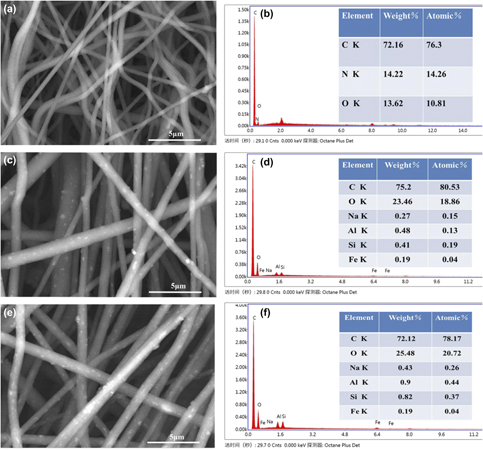Article contents
The mineralization of polymer electrospun fibrous membranes modified with tourmaline nanoparticles
Published online by Cambridge University Press: 04 March 2019
Abstract

As distinctive spontaneous polarization and far-infrared radiation characteristics, the natural mineral tourmaline (TM) has the regulatory effect on crystallization behavior, which possesses potential application in biomimetic mineralization and bone regeneration. In this study, polyurethane (PU) and gelatin (GE) membranes with different adding proportion of TM nanoparticles were prepared via electrospinning. Additionally, the effect of TM nanoparticles on the mineralization process of hydrophobic PU and hydrophilic GE was investigated by immersing the composite TM/PU and TM/GE electrospun membranes in the 10× simulated body fluid (10SBF) at 37 °C for varying periods of time. SEM images confirmed the well-dispersed TM nanoparticles in the PU and GE electrospun fibers. The mineralization deposition was characterized by the SEM, EDS, XRD, and FTIR, and it indicated that two types of calcium phosphate deposits with different Ca/P molar ratios were obtained when TM/PU membranes and TM/GE membranes were incubated in 10SBF. Honeycomb-like hydroxyapatite crystals nucleated and grew faster on TM/PU and TM/GE membranes than the pure PU and GE membranes, respectively. Furthermore, with the increase of the added TM nanoparticles in the composite membranes, more calcium phosphate crystals were precipitated. These results showed that the added TM nanoparticles were able to improve the mineralization of polymer fibrous membranes, which is potential for the composite bone scaffold.
- Type
- Article
- Information
- Journal of Materials Research , Volume 34 , Issue 11: Focus Issue: (Nano)materials for Biomedical Applications , 14 June 2019 , pp. 1900 - 1910
- Copyright
- Copyright © Materials Research Society 2019
References
- 7
- Cited by


